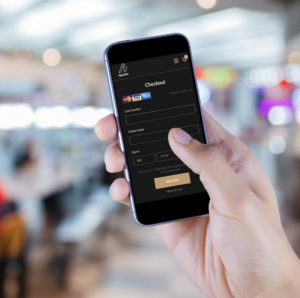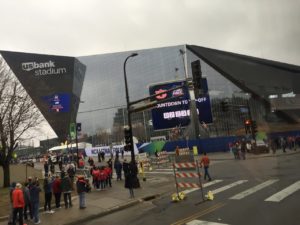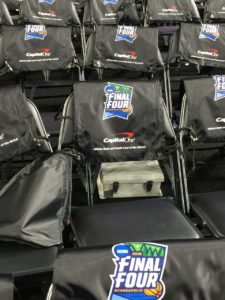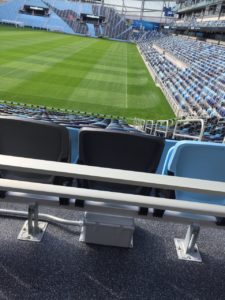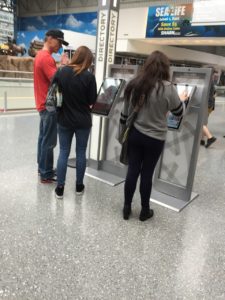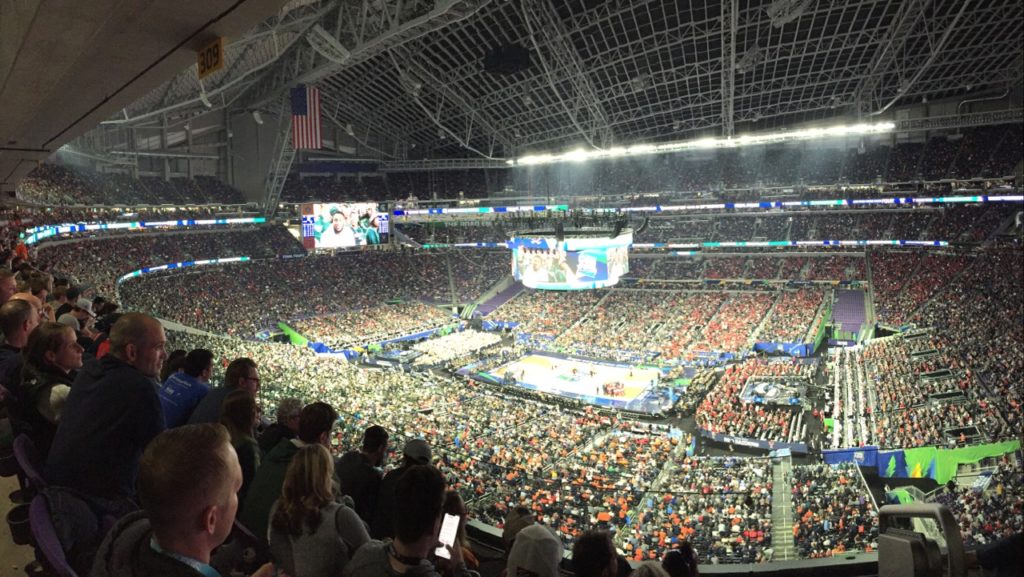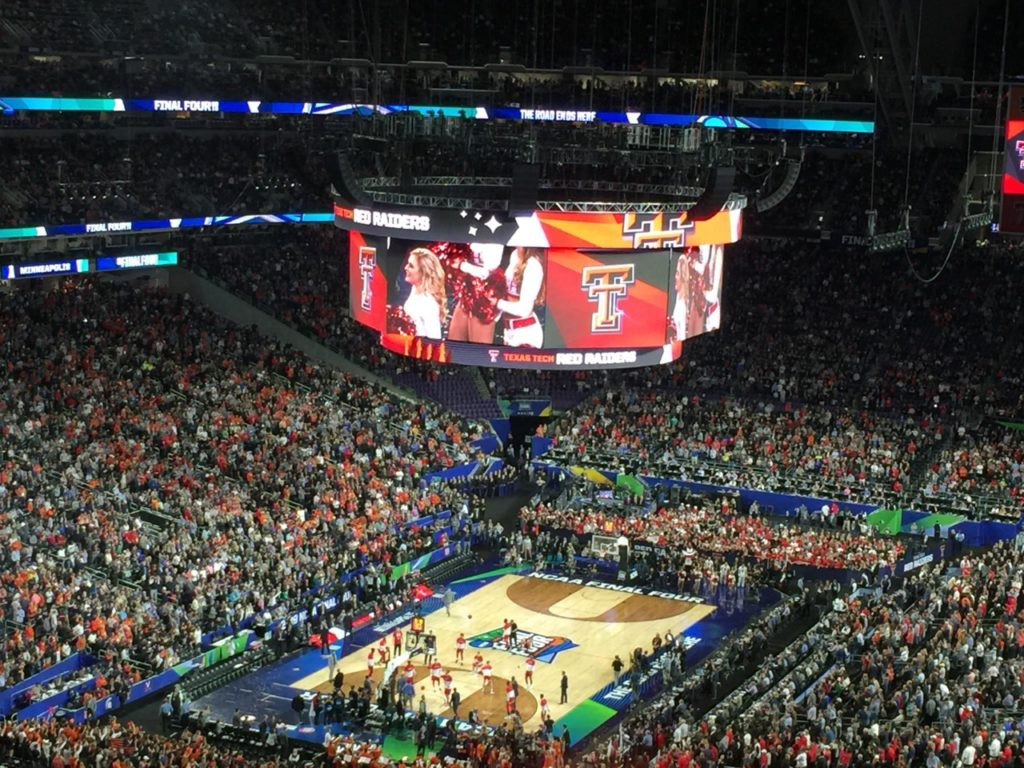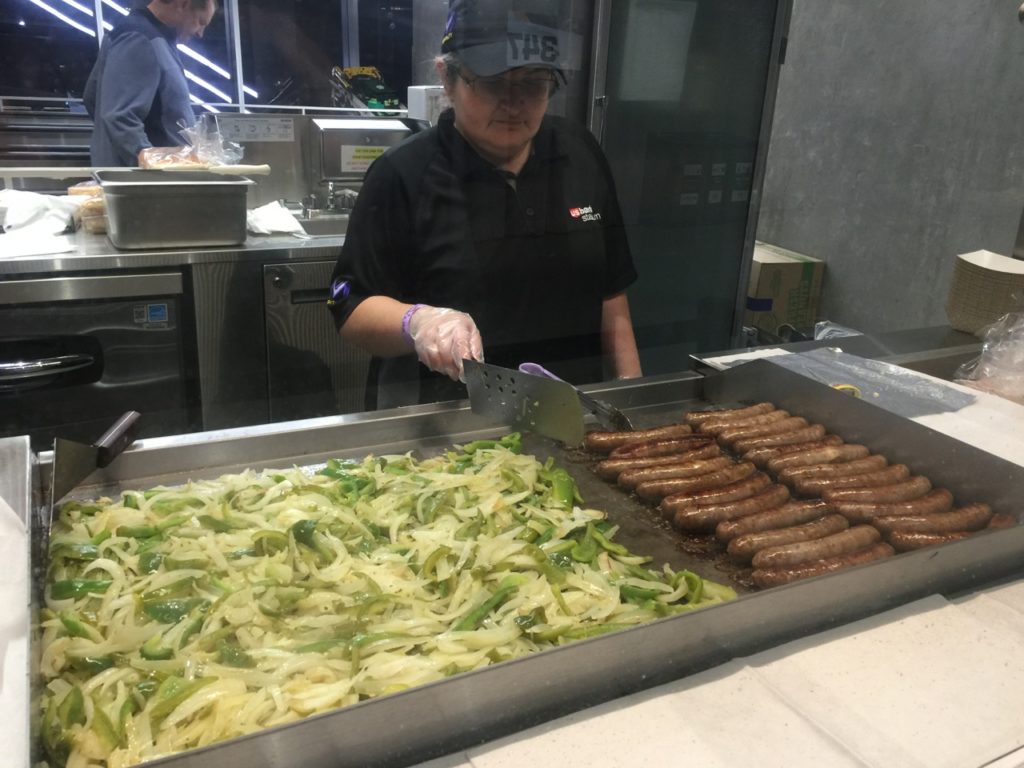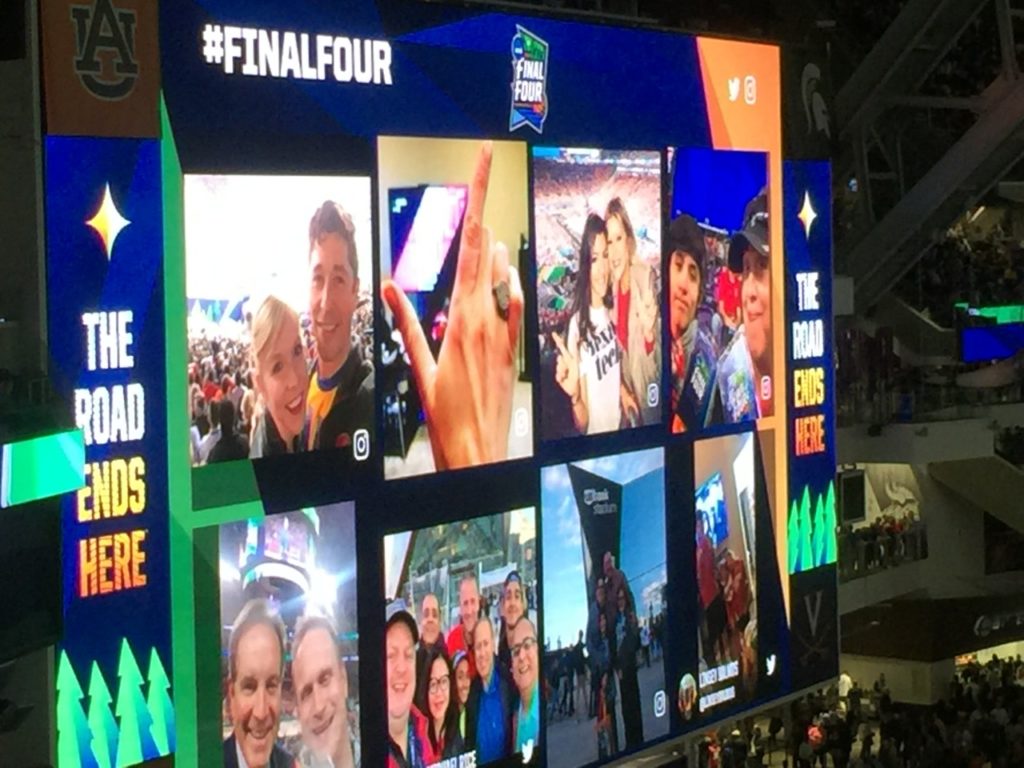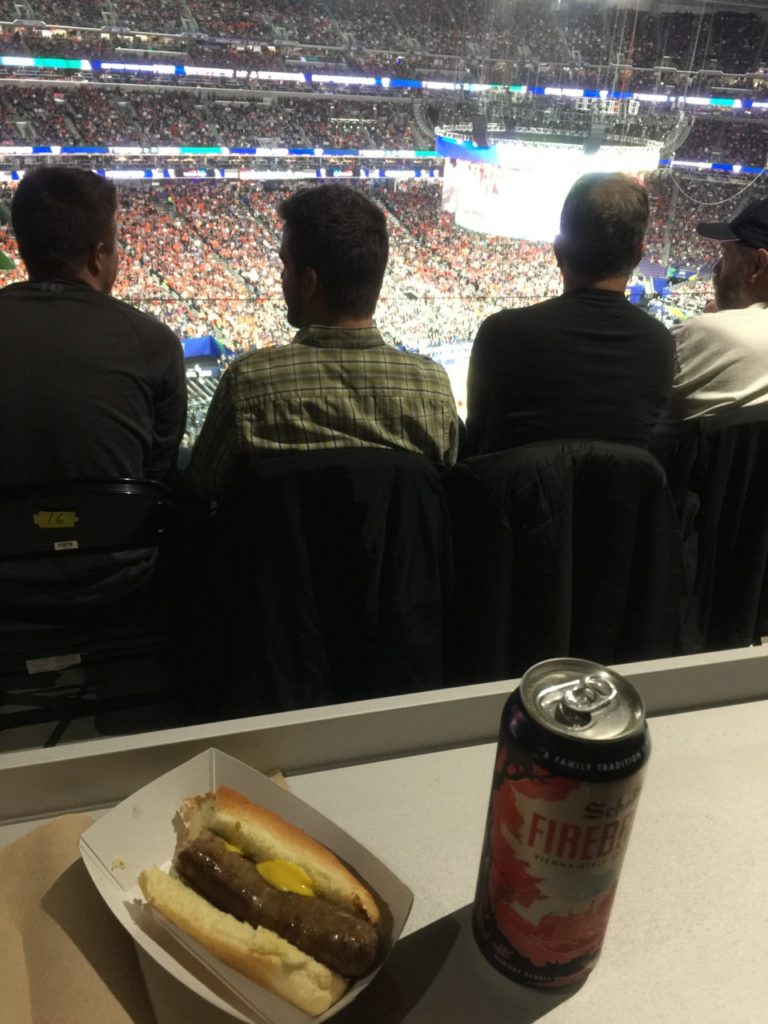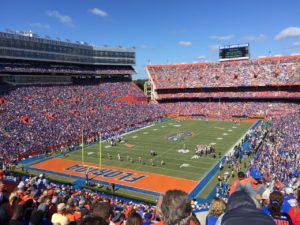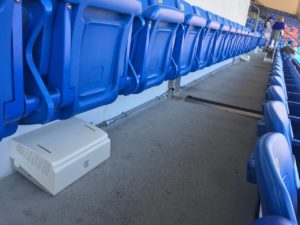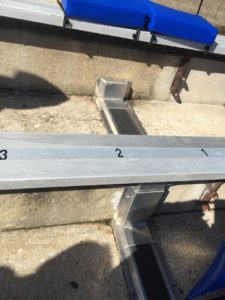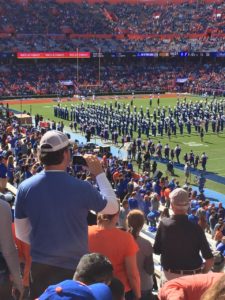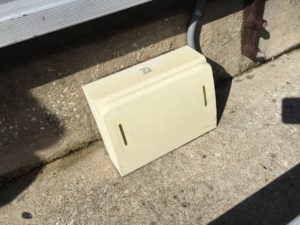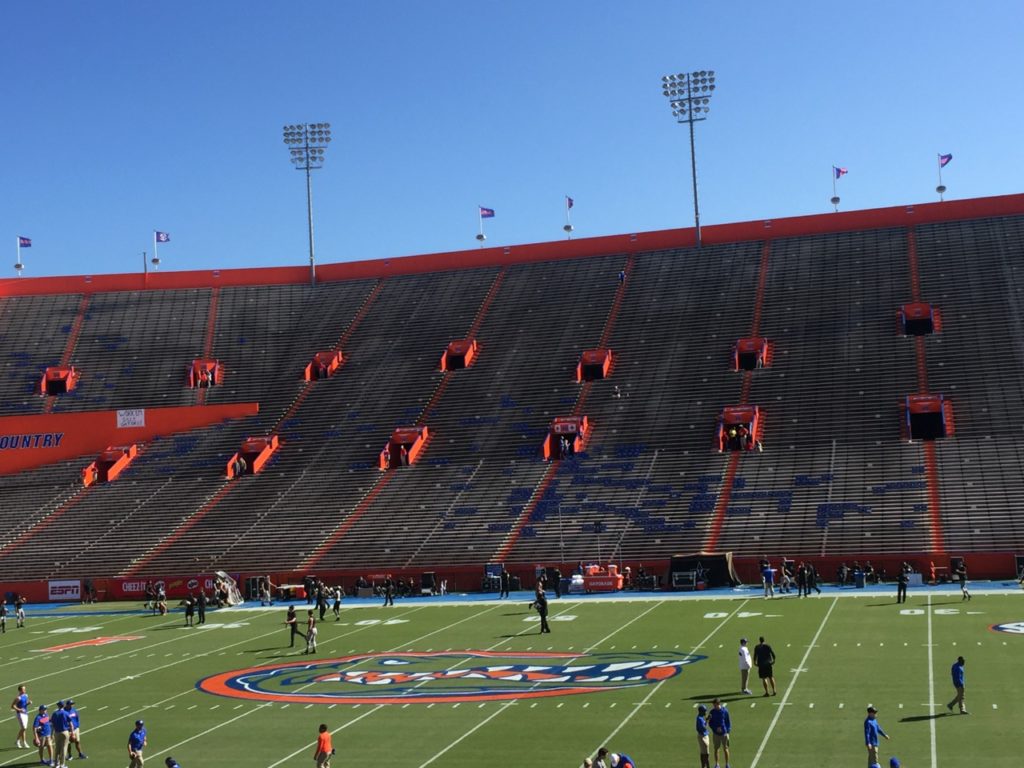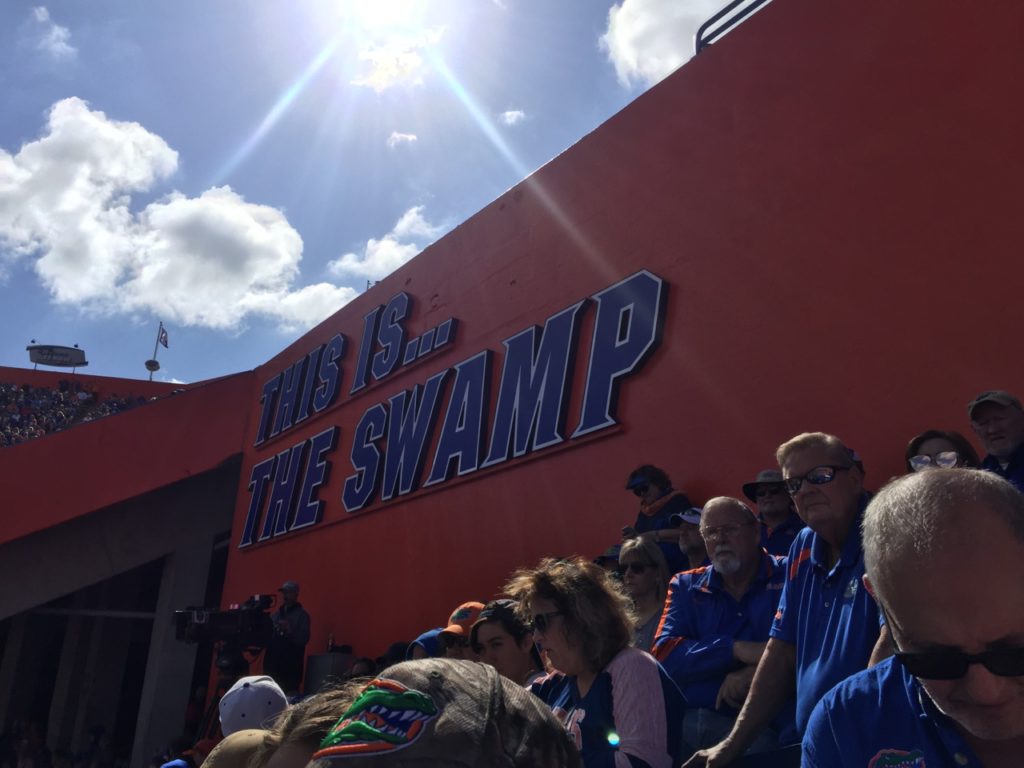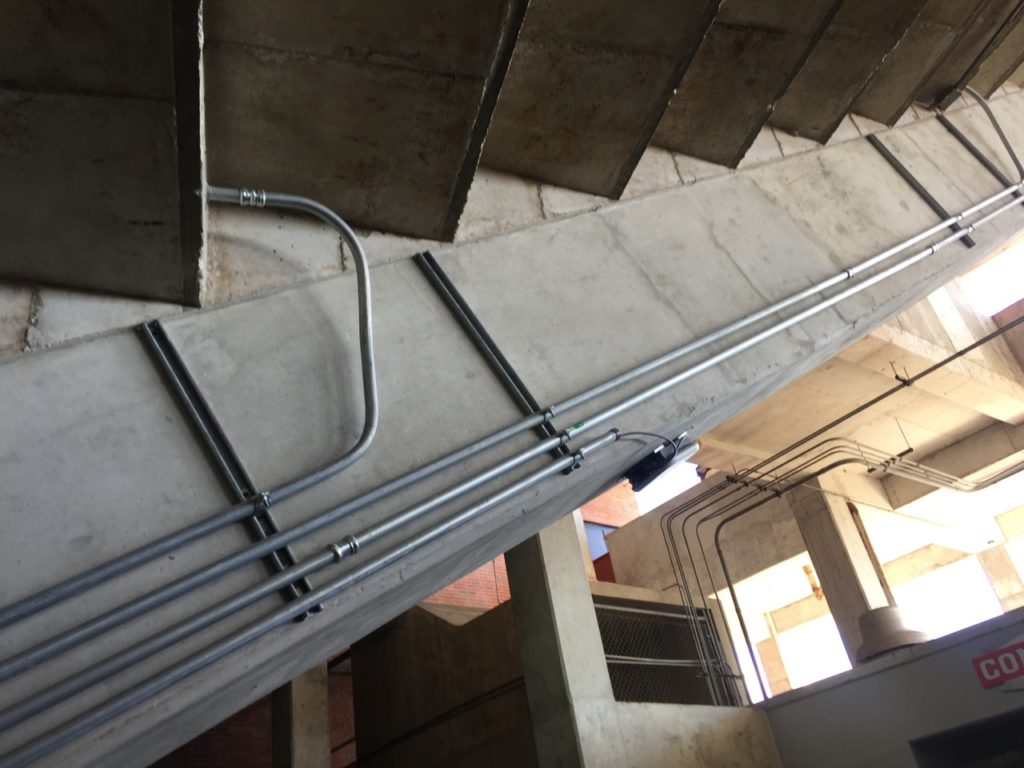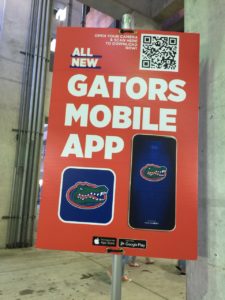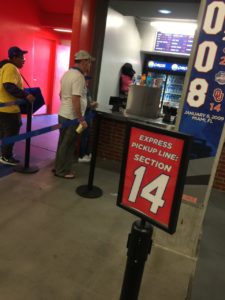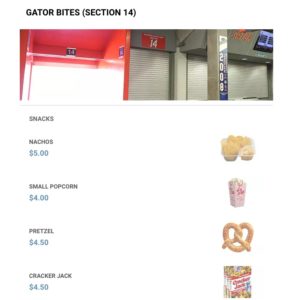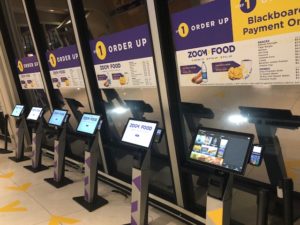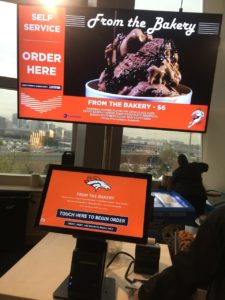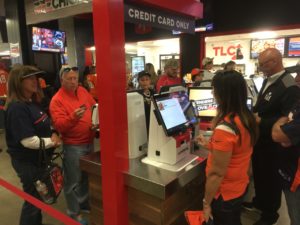
Fans at Empower Field at Mile High Stadium use Appetize-powered kiosks to order and pay for food. Credit: Paul Kapustka, MSR
That’s certainly the view from Appetize, one of the top players in the venue point-of-sale technology business. In a recent call with Appetize chief strategy officer Kevin Anderson, he said the last few weeks have been among the busiest in company history, as teams, schools and venues seek ways to make concessions operations more touch-free going forward. Though there are no government mandates yet making such technologies a necessity to open venues, it makes sense that when events come back fans might be feel safer using technology-aided methods like ordering and paying online, or paying with touchless device systems (like Apple Pay), as opposed to traditional human-based counter interactions.
“Most of our customers, including venues and managed-service food companies, are realizing that if their venues are not able to accept [contactless] payments today they will have to — and if they don’t have mobile or online ordering, they will need to do that as well,” Anderson said.
App- or web-based ordering should increase
Appetize, which sells a wide range of software and hardware for stadium and other point-of-sale systems, has also recently added support for web-based ordering in venues, something that other vendors like VenueNext have also rolled out. While stadium and team apps with support for in-venue food ordering (with either delivery or pick-up options) have been around in various forms for several years, the idea of a web-based “app” with similar functionality is a newer and growing idea, one that could gain even more traction whenever venues open again.
What web-based systems have in their favor is that they can be used by fans almost instantly, without having to go through the process of downloading an app.A web-ordering system, Anderson said, “is very well positioned for a post-Covid world” since it could give venues the flexibility of a walk-up encounter without the human interaction. In one scenario Anderson said fans could use their device’s camera to scan a sign or display with a QR code, which would bring up a menu for the concession stand close to the sign. Fans can then order and pay without having to stand in a line, and get an alert to pick up their order when it is ready.
“Venues are not going to bulldoze concession stands, but they will have to figure out how to space out people in lines and how to incentivize people to pay with contactless systems,” Anderson said. “It’s going to be the future.”
Still bullish on touch-screen kiosks
Anderson also thinks that touch-screen kiosks will still be popular going forward, even if some people feel less safe touching a payment or ordering screen.
“We’re still bullish on kiosks,” said Anderson, who said 90 percent of Appetize’s venue deployments included some kind of touch-screen system. For many of its systems, Anderson said Appetize uses antimicrobial screen protectors, and going forward they foresee having sanitization stations near any touch-screen device.
“If you just use one finger to touch the screen and then you sanitize it after you’re done, that’s still better than being two feet away from someone speaking to you,” Anderson said.
Other less-human-contact ideas for venue concessions include more vending machines and grab-and-go type windows, where prepared, boxed items will help keep fans safer. Appetize is also already working on systems where food and beverages can be placed inside lockers that fans can access with a mobile device.
“I think you’ll see more concession stands flipped inside out, where you can just grab a sandwich in a package with a bar code and go,” Anderson said.
